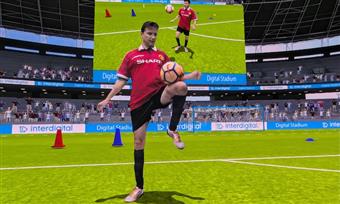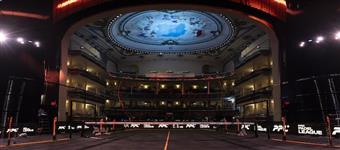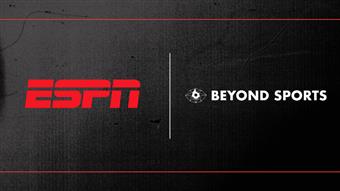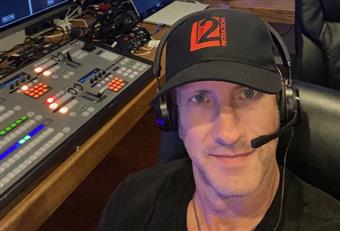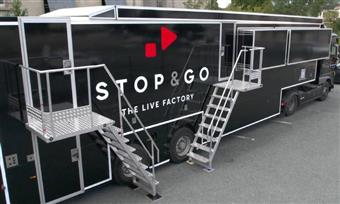 A tale of two trailers: France's Stop & Go doubles up with its new hybrid truck By Kevin Emmott
A tale of two trailers: France's Stop & Go doubles up with its new hybrid truck By Kevin Emmott Wednesday, October 22, 2025 - 13:23
Print This Story
Stop & Go's new OB4 truck is capable of supporting 16 cameras and three EVS machines, it too features an SSL System T S400 console at the centre of its audio room, Genelec monitoring and RTS and Riedel intercoms, and its design is a step change for the growing French company
As remote production continues to reshape live broadcasting, French OB specialist Stop & Go Production is rethinking its connectivity with hybrid truck designs, centralised workflows and a commitment to sustainability. Technical director Thomas Mutos reveals how the company's latest OB units - one traditional, one not so much - are keeping pace with its customers changing needs.
All across Europe, outside broadcast companies are reassessing their workflows to incorporate more and more remote production. It has led to the build of more remote operation centres (ROCs), clever connectivity with fully redundant routes, and it is increasingly changing what our perception of outside broadcast trucks look like.
These shifts are not reducing the number of remote facilities on the road; far from it. But they are challenging our notion of what a remote truck is.
These days remote trucks no longer operate as standalone production units. These days broadcasters demand much more flexibility and their trucks are more likely to be part of their extended network.
In the last few months there have been announcements from the likes of Gravity Media and NEP UK about remote units that are designed to tap into remote infrastructures, but it's not just these industry giants that recognise this potential.
Stop & Go Production was established in 2010. Mutos' role is to design and integrate the technical infrastructure of Stop & Go's fleet of OB trucks and, he says, guide our clients towards solutions that fit both their business model and their operational needs .
The company's evolution over the last 15 years has increasingly focused on more premium productions and reducing the company's environmental impact. This year it continued its growth with a client base encompassing a range of content from endurance racing to rugby to handball, and includes content providers like beIN Sports and Canal+. And this year Mutos presided over the design and commissioning of two very different OB trucks.
Audio engineer Romain Mouret in Stop & Go's OB4 on its debut for Top 14 Rugby
Double top
Commissioned in April, OB6 is a traditional OB unit with 24 cameras and five EVS', with a SSL System T S400 console, full Genelec monitoring, and RTS and Riedel intercoms powering the audio.
OB6 was completely refurbished at the start of 2025, says Mutos. It features a full-size 48-fader SSL System T audio desk to give us a larger control surface and is custom-designed for high capacity productions and premium events. Its layout allows for more space and a bigger technical setup.
Meanwhile, launched in September 2025 having made its live debut providing coverage of the French Top 14 Rugby League for Canal+, OB4 is quite different. Although it shares a lot of the same audio equipment as OB6, OB4's technical setup and design priorities are tailored to completely different production needs. Capable of supporting 16 cameras and three EVS machines, it too features an SSL System T S400 console at the centre of its audio room, Genelec monitoring and RTS and Riedel intercoms, but its design is a step change for the growing French company.
This project is very important to us as it represents a major step forward in how we approach live production, says Mutos. Our approach was to design a two-storey control room which improves operational efficiency, power, and flexibility. The ground level caters for storage and field equipment prep, with an option to carry a generator with automatic switchover for full redundancy.
The upper level houses a full control room equipped with four expanding sides and one vertical slide-out which provides two metres of ceiling height. Housing everything in one single unit lowers maintenance and transport costs, which also halves our ecological and carbon impact, and it enables us to optimise our workspaces, despite having a smaller physical footprint.
But crucially, it is also our very first hybrid truck, capable of operating fully autonomously or being entirely remote controlled. This dual capability allows us to reduce production costs by limiting team travel and centralising resources, while also lowering our environmental impact. Using a single truck for both workflows is a key part of this strategy.
The System T console inside Stop & Go's OB4
Environmental policy
Mutos says that Stop and Go's focus on sustainability and reducing its carbon footprint is aligned with the preferences of its clients in the French market, and that reducing the environmental impact of live broadcast is important both for the company's values and for meeting client expectations.
Clients are increasingly seeking partners who can demonstrate a commitment to reducing their carbon footprint, he says. In fact, in France, we have a penalty for companies that negatively impact the environment, and it's important for us all to work towards reducing this impact.
Mutos is referring to the European Union's Corporate Sustainability Reporting Directive (CSRD) that came into effect on 1 January 2024. In France, the bill is especially punitive; the French government was the first member state to implement the law, and infringements can attract fines of up to 75,000 and up to five years imprisonment. It's no wonder that French broadcasters and technology partners have the environment front of mind.
We started by rethinking the n














